Blog Entry Written by Team: Red Swampy Crayfish (Procambarus clarkii)
Team Members: Sasha Main (Queen’s), Zhizhou He (Fudan), and Zihan Dong (Waterloo)
Weather: Sunny, Humid, Temp 30-35 degrees Celsius
团队成员:Sasha Main(皇后大学)、何知舟(复旦大学)、董子涵(滑铁卢大学)
天气:晴,潮湿,温度30-35摄氏度
This morning was an early 5:40 am departure to the Shanghai train station, and then to Wuhan via fast train. When we left many students were tired and we were a bit delayed due to a couple forgotten cell phones. Once we arrived at the train station there was great “people watching” and we purchased much needed coffee. We joked around while waiting, particularly at a poorly named clothing store in the train station called “Teenie Weenie”. We boarded the fast train around 8:20am and many team groups started working on their seminar presentations. We also made sure to observe the changes of landscape as we were on the train. Shanghai was very developed but once we passed Nanjing there was much more land allocated to agriculture and aquaculture- specifically fish culture ponds. Eventually the landscape turned to forested mountains with the winding river, and many rural areas complete with dirt roads. In between opening of tunnels we observed large fields of solar panels.
早上我们离开的时间很早,五点四十从上海火车站出发乘坐高铁去武汉。我们出发的时候很多同学都比较疲惫,并且因为某几位同学忘记了携带手机,我们有些许的延误。到达火车站,我们从数之不尽的人群中我们试图感受文化差异,然后购买了一些必要的咖啡。在等待时我们说说笑笑,特别是看到一个名字起的很烂的服装店‘小丁丁’。我们在8点20分登上高铁,很多小组开始着手准备他们的小组学术展示。我们也有确保观察铁路沿途的地貌变化。上海市非常的发达,但是路过南京之后,我们发现了很多被分配用作农业和水产业的土地,特别是用作鱼塘的土地。最终地貌变化为森林覆盖的山脉,还有蜿蜒的河流伴随其中,还有一些乡间地区遍布着泥土路。在隧道之间的路程,我们观察到了大片的太阳能电池板。
Once we arrived in Wuhan, we boarded a bus to travel to the CAS Hydrobiology Institute, also known as the Yangtze Cetacean Breeding and Research Center. On our bus ride, we passed over the Yangtze river which looked very brown and had many cargo ships. We got rerouted and walked through a lesser developed area of Wuhan to reach the Hydrobiology facility. We were warmly welcomed with introductions from Hao Yujiang and a guest speech on the research facility’s initiatives by Liu Xin. They informed us that the Yangtze River Dolphin (Lipotes vexillifer) had many population stresses due to human activity, such as shipping, pollution, fishing and hydro projects, leading to its functional extinction in 2007.
一到武汉,我们就上了巴士,前往中国科学院水生生物研究所(又名长江鲸类繁育研究中心)。乘车通过武汉第二长江大桥时,我们看到泥沙浑浊的长江上泊有很多货船。下车后,我们步行穿过武汉一个较不发达的地段,到达了水生生物研究所。我们受到了郝玉江的热情接待并聆听了刘欣关于研究中心倡议的嘉宾演讲。他们告诉我们,由于人类活动,长江白暨豚(Lipotes vexillifer)面临许多种群压力,如航运、污染、渔业和水利工程等。这些压力导致其在2007年功能性灭绝。江豚(Neophocaena asiaeorientalis)也面临着类似的压力,其数量从1991年的2550只减少到了2012年的505只。为了拯救江豚,该机构建立了许多自然保护区和圈养繁殖计划。保护区在增加江豚数量方面取得了成功,但是在过去的22年里,圈养繁殖计划只繁殖了两只健康的江豚。关于在江豚育种计划中面临的挑战——如基因库的缩减和亚种的使用可能——有一些有趣的争论。总之,公众意识、政府关注和非政府组织的参与有望继续帮助江豚保护它们的自然栖息地。演讲结束后,我们很高兴能够看到属于圈养繁殖计划中一些江豚。它们很漂亮,这是我们这天行程的最大亮点。
They informed us that the Yangtze River Dolphin had many population stresses due to human activity, such as shipping, pollution, fishing and hydro projects, leading to its extinction in 2007. The finless porpoise faces similar stresses, and the population has declined from 2550 in 1991 to 505 in 2012. In order to attempt to save the finless porpoise the institution has created many natural reserves and a captive breeding program. The reserves have been successful in increasing them, but the captive breeding program has only produced two healthy finless porpoises in the last 22 years. There was interesting discussion of the challenges to come in the breeding program such as reduced gene pool and the possible use of sub-species. Altogether, there’s hope that public awareness, government concern, and involvement of NGOs will continue to help the finless porpoises and protect their natural habitat. After the presentation, we had the pleasure of seeing a few of the finless porpoises in the captive breeding program. They were beautiful, and it was the highlight of our day.
他们讲述了白鳍豚面临的人类活动如航运,污染,渔业和水利工程带来的种群压力,2007 年白鳍豚灭亡。江豚也面临着同样的困境,并且种群数量从1991年的2550头下降到了2012年的505头。为了拯救江豚,机构建立了很多自然保护区并启动了圈养繁殖项目。保护区成功实现了数量增长,然而圈养繁殖项目在过去的22年里只带来了两条健康的小生命。对于圈养繁殖面临的困境比如缩小的基因库和潜在可用的亚种,我们进行了有趣激烈的讨论。总的来说,我们希望民众觉醒,政府关注,非政府组织的参与可以继续帮助江豚种族的延续和保护它们的栖息地。
After the presentation, we had the pleasure of seeing a few of the finless porpoises in the captive breeding program. They were beautiful, and it definitely was the highlight of our day.
That evening we presented our seminar on aquaculture in China and Canada. The team ‘finless porpoise’ also presented on invasive species, featuring case studies on Asian Carp, Spartina alternifora, and Clarias patradus. Overall, it was an unforgettable day filled with lots of new information and lots of laughter.
小组展示之后,我们很开心地观看了一些江豚的圈养繁殖项目。它们非常美丽,那一定是一天中十分美妙的时刻。
那个晚上我们进行了我们的小组展示,题目是中国和加拿大的水产养殖业。‘江豚’小组也展示了他们的话题——入侵物种,并有一些例子比如亚洲鲤鱼,互花米草,Clarias patradus,总的来说,这一天非常难忘,我们学到了许多知识,伴随着无穷的欢乐。
- Early morning outside of the Shanghai train station. 清晨在上海火车站外拍摄。
- Students listening to the guest presentation at the CAS Hydrobiology Institution. 师生共同在中科院水生生物研究所听嘉宾演讲。
- Our group nervously posing before our seminar. 我们小组在研讨会前紧张地摆姿势。
- View of the Yangtze River from the bus travelling to our hotel in Wuhan. 1) 从去武汉宾馆的巴士上可以看到长江。
- Beautiful view of the finless porpoises involved in the captive breeding program swimming at the CAS Hydrobiology Institution. 中国科学院水生生物研究所人工繁育项目中江豚的靓影。

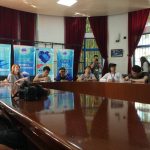
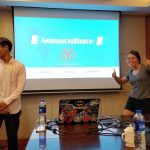
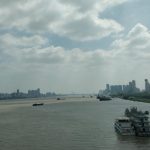

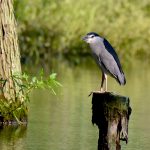

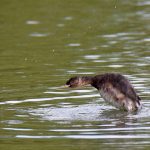

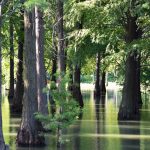
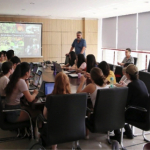
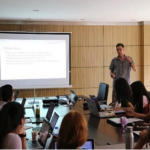
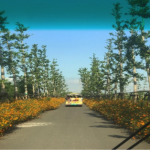
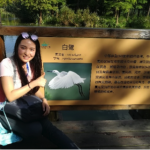

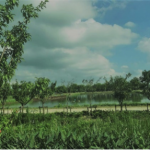
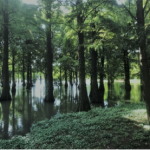
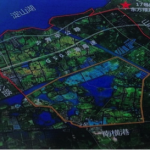
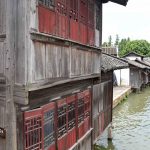
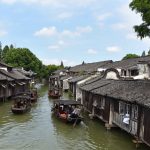
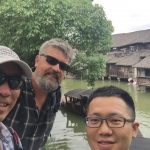

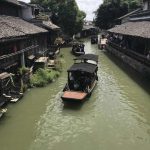
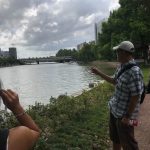
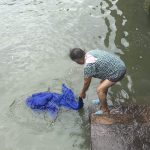
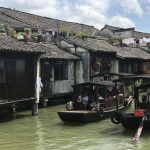
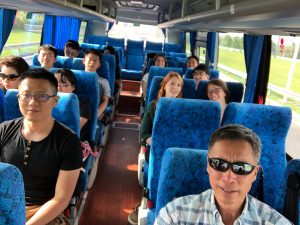
Recent Comments